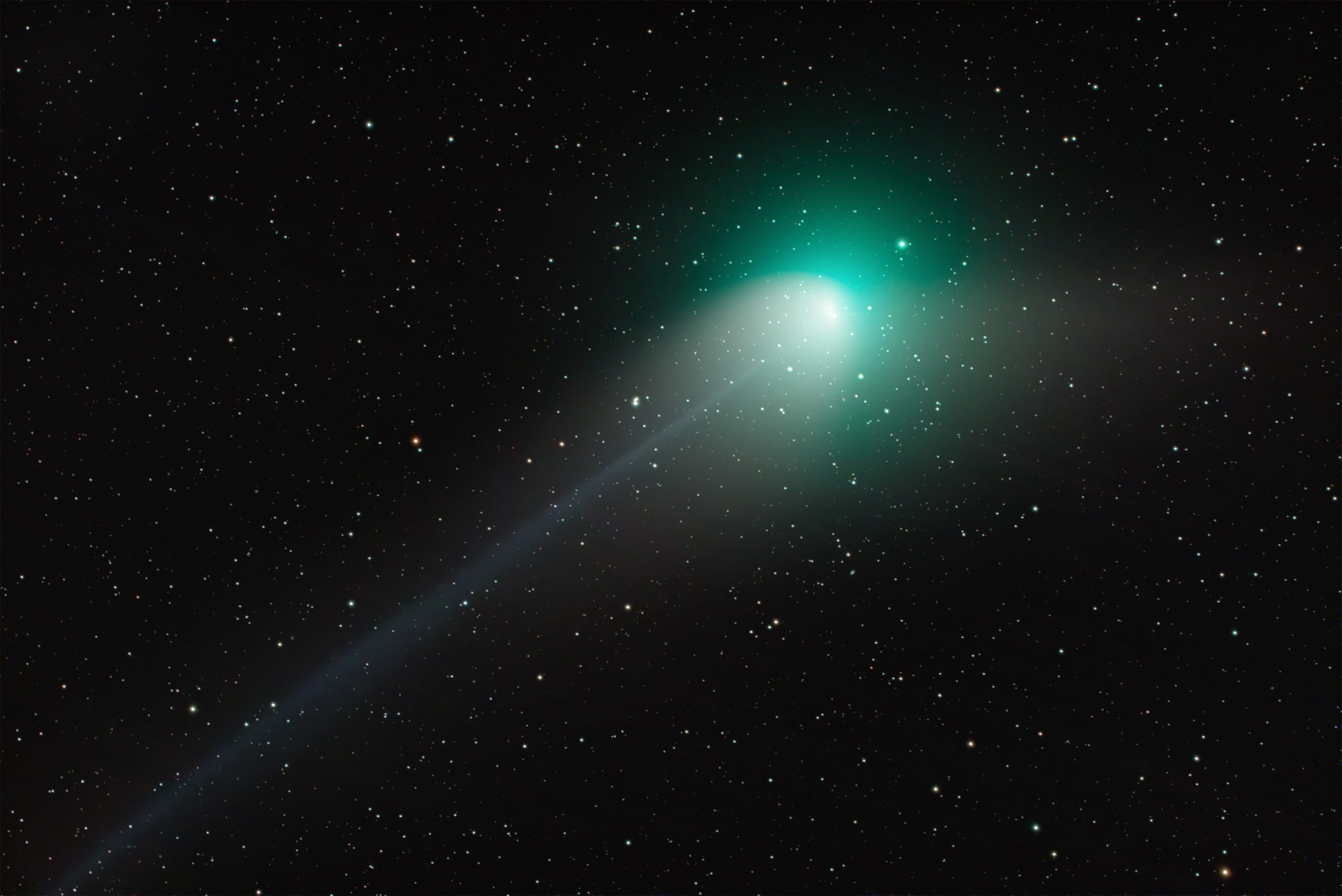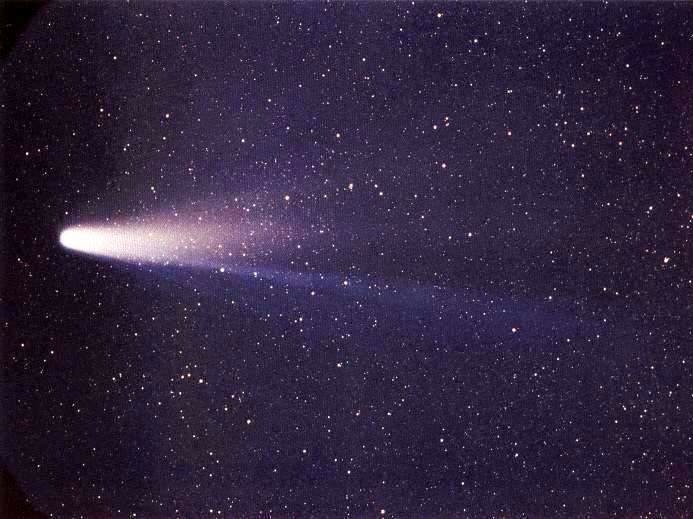The green comet, officially known as C/2022 E3 (ZTF), is a long-period comet that is making its closest approach to Earth in 50,000 years. It is expected to be visible to the naked eye for a few weeks before and after it makes its closest approach on February 2, 2023.
The C/2022 E3 (ZTF) gets its color from the presence of diatomic carbon molecules in its coma. Diatomic carbon is excited by ultraviolet light from the sun, causing it to emit green light.
The green comet is a rare and exciting opportunity to see a comet up close. It is also a valuable opportunity for scientists to learn more about the composition and evolution of comets.

When can I see the green comet?
The green comet, officially known as C 2022 e3 ztf, was discovered in March 2022 and has been making its way towards Earth ever since. It will make its closest approach to our planet on February 2, 2023, and will be visible to the naked eye for a few weeks before and after that date.
What will the green comet look like?
The green comet will appear as a faint, fuzzy object in the night sky. It may have a greenish hue, but this will be difficult to see with the naked eye. To get the best view of the comet, you will need to use binoculars or a telescope.
How can I photograph the green comet?
To photograph the C/2022 E3 (ZTF), you will need a camera with a long telephoto lens and a tripod. You should also find a dark location with minimal light pollution. Once you have found a good spot, set your camera to manual mode and adjust the exposure settings until you can see the comet. It may take some trial and error to get the perfect settings, so be patient.
Is the green comet visible to the naked eye?
Yes, the green comet will be visible to the naked eye for a few weeks before and after it makes its closest approach to Earth. However, it will be best seen with binoculars or a telescope.
What are the best times to see the green comet?
The best times to see the green comet are in the early morning or late evening sky. It will be located in the constellation Auriga, near the star Capella.
Where is the green comet now?
The green comet is currently located in the constellation Ursa Major, near the star Alkaid. It is moving towards the constellation Auriga, where it will be located in early February 2023.
When will Comet C 2022 e3 ztf be visible in the Northern Hemisphere?
Comet C/2022 E3 (ZTF) will be visible in the Northern Hemisphere from early December 2022 to early March 2023. It will be best seen in the early morning or late evening sky.
How can I photograph Comet C/2022 E3 (ZTF) with my iPhone?
To photograph Comet C/2022 E3 (ZTF) with your iPhone, you will need to use a tripod and a long telephoto lens attachment. You should also find a dark location with minimal light pollution. Once you have found a good spot, set your iPhone to manual mode and adjust the exposure settings until you can see the comet. It may take some trial and error to get the perfect settings, so be patient.
Is Comet C/2022 E3 (ZTF) bright enough to see with the naked eye?
Yes, Comet C/2022 E3 (ZTF) will be bright enough to see with the naked eye for a few weeks before and after it makes its closest approach to Earth. However, it will be best seen with binoculars or a telescope.
What are the best times to see Comet C 2022 e3 ztf (ZTF) in the Eastern sky?
The best times to see Comet C/2022 E3 (ZTF) in the Eastern sky are in the early morning hours. It will be located near the constellation Auriga.
What is the chemical composition of the green comet’s coma?
The green comet’s coma is composed of dust and gas that has been released from the comet’s nucleus as it heats up as it approaches the sun. The green color is caused by the presence of diatomic carbon molecules, which are excited by ultraviolet light from the sun.
What is the green comet’s orbital period in years?
The green comet’s orbital period is estimated to be 50,000 years. This means that it takes 50,000 years for the comet to orbit the sun once.
What are some of the theories about the green comet’s origin?
One theory is that the green comet came from the Oort cloud, a spherical cloud of icy bodies that is located at the edge of the solar system. Another theory is that the comet came from the Kuiper belt, a region of icy bodies that is located beyond Neptune.
What can we learn about the formation of the solar system by studying the green comet?
By studying the green comet, we can learn more about the composition and evolution of the solar system. The comet’s nucleus is thought to be made of primitive material that dates back to the early formation of the solar system. By studying the comet

How does the green comet compare to Halley’s Comet?
The green comet and Halley’s Comet are both comets, but they have a number of important differences.
- Orbital period: The C/2022 E3 (ZTF) has an orbital period of 50,000 years, while Halley’s Comet has an orbital period of 76 years. This means that the green comet visits the inner solar system much less frequently than Halley’s Comet.
- Visibility: The green comet is expected to be visible to the naked eye for a few weeks before and after it makes its closest approach to Earth on February 2, 2023. Halley’s Comet is also visible to the naked eye, but it is typically much brighter than the C/2022 E3 (ZTF).
- Composition: The green comet’s coma is composed of dust and gas that contains diatomic carbon molecules. This gives the comet its greenish hue. Halley’s Comet’s coma is also composed of dust and gas, but it does not contain diatomic carbon molecules.
Another important difference is that the C/2022 E3 (ZTF) is thought to have come from the Oort cloud or the Kuiper belt, while Halley’s Comet is thought to have come from the inner solar system.
Overall, the green comet and Halley’s Comet are both fascinating objects that can offer us insights into the formation and evolution of the solar system. However, they are also very different comets, with different orbital periods, visibility, and composition.
How does the C/2022 E3 (ZTF) compare to Comet Hale-Bopp?
The green comet and Comet Hale-Bopp are both long-period comets, meaning that they have orbital periods of more than 200 years. They also have similar orbital paths, with both comets passing close to Jupiter on their way to the inner solar system.
However, there are also some important differences between the two comets. The green comet is much smaller than Comet Hale-Bopp, with a nucleus that is about 10 kilometers in diameter. Comet Hale-Bopp had a nucleus that was about 40 kilometers in diameter.
Another difference is that the green comet is not expected to be as bright as Comet Hale-Bopp was. Comet Hale-Bopp was one of the brightest comets of the 20th century, and it was visible to the naked eye for over a year. The C/2022 E3 (ZTF) is expected to be visible to the naked eye for a few weeks before and after it makes its closest approach to Earth on February 2, 2023.
Finally, the green comet is thought to have come from the Oort cloud, while Comet Hale-Bopp is thought to have come from the Kuiper belt.
Overall, the C/2022 E3 (ZTF) and Comet Hale-Bopp are both fascinating objects that can offer us insights into the formation and evolution of the solar system. However, they are also very different comets, with different sizes, brightness, and origins.
How does the green comet compare to Comet C/2014 Q2 (Lovejoy)?
The green comet and Comet C/2014 Q2 (Lovejoy) are both long-period comets, meaning that they have orbital periods of more than 200 years. However, there are some important differences between the two comets.
- Orbital period: The C/2022 E3 (ZTF) has an orbital period of 50,000 years, while Comet C/2014 Q2 (Lovejoy) has an orbital period of 12,000 years. This means that the green comet visits the inner solar system much less frequently than Comet C/2014 Q2 (Lovejoy).
- Visibility: The C/2022 E3 (ZTF) is expected to be visible to the naked eye for a few weeks before and after it makes its closest approach to Earth on February 2, 2023. Comet C/2014 Q2 (Lovejoy) was also visible to the naked eye, but it was only visible for a few days.
- Composition: The green comet’s coma is composed of dust and gas that contains diatomic carbon molecules. This gives the comet its greenish hue. Comet C/2014 Q2 (Lovejoy)’s coma was also composed of dust and gas, but it did not contain diatomic carbon molecules.
Another important difference is that the green comet is thought to have come from the Oort cloud, while Comet C/2014 Q2 (Lovejoy) is thought to have come from the Kuiper belt.
Overall, the green comet and Comet C/2014 Q2 (Lovejoy) are both fascinating objects that can offer us insights into the formation and evolution of the solar system. However, they are also very different comets, with different orbital periods, visibility, composition, and origins.
How does the green comet compare to Comet NEOWISE?
The green comet and Comet NEOWISE are both long-period comets, meaning that they have orbital periods of more than 200 years. They also have similar orbital paths, with both comets passing close to Jupiter on their way to the inner solar system.
However, there are also some important differences between the two comets. The green comet is much smaller than Comet NEOWISE, with a nucleus that is about 10 kilometers in diameter. Comet NEOWISE had a nucleus that was about 5 kilometers in diameter.
Another difference is that the green comet is not expected to be as bright as Comet NEOWISE was. Comet NEOWISE was one of the brightest comets of the 21st century, and it was visible to the naked eye for several months. The C/2022 E3 (ZTF) is expected to be visible to the naked eye for a few weeks before and after it makes its closest approach to Earth on February 2, 2023.
Finally, the green comet is thought to have come from the Oort cloud, while Comet NEOWISE is thought to have come from the Kuiper belt.
Overall, the C/2022 E3 (ZTF) and Comet NEOWISE are both fascinating objects that can offer us insights into the formation and evolution of the solar system. However, they are also very different comets, with different sizes, brightness, and origins.
